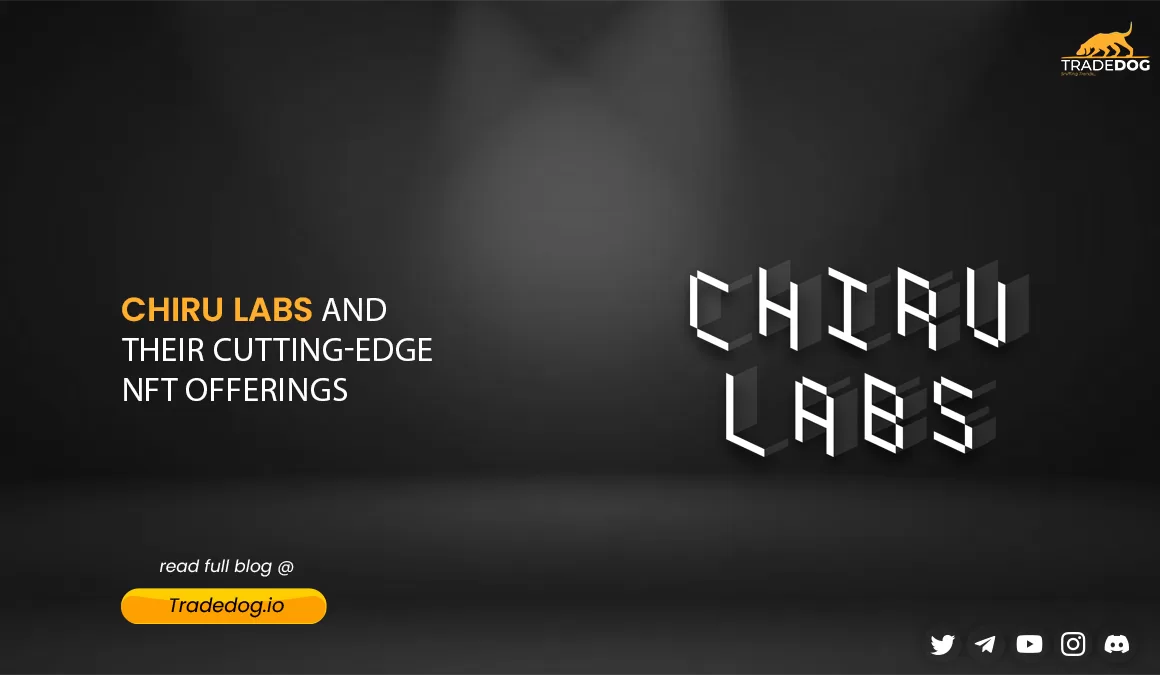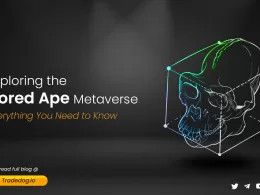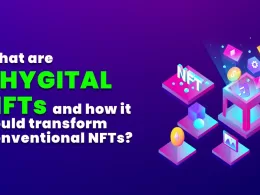Quick Links
Chiru Labs has emerged as a pioneering force in the fast-paced world of non-fungible tokens (NFTs), pushing the boundaries of digital art and blockchain technology. With their flagship NFT collections, Azuki and Beanz, Chiru Labs has captured the imagination of enthusiasts and investors alike. In this blog, we will delve into the key features of Chiru Labs’ NFT collections, examine the recent developments surrounding Azuki’s floor price, explore their physically backed token concept, highlight the ERC721A Contract, discuss the roadmap for Chiru Labs, and touch upon other significant developments. Let’s dive in!
What is Chiru labs
Chiru Labs is a Web3 company at the forefront of the NFT revolution. They are known for their innovative approach to NFT collections, blending captivating artwork with cutting-edge technology. Founded by Zagabond, a pseudonymous figure, Chiru Labs has significantly impacted the digital art space.
The company has created blue-chip NFT collections like Azuki. It has recently linked up with popular Line Friends media and merchandise property by partnering up with IPX (a parent company).
Chiru Labs: NFT Collections
Chiru Labs introduced two notable NFT collections: Azuki and Beanz. These collections have captivated collectors and investors worldwide with their unique art styles and engaging narratives.
Azuki
Azuki gained popularity as an anime-inspired NFT collection featuring skateboarder characters that took the NFT market by storm. It generated immense transaction volume, surpassing well-known tokens like the Bored Ape Yacht Club and CryptoPunks. Placed in the top 10 collections on Opensea, the collection has grabbed the lion’s share in total volume, amounting to 606.3K ETH, with 4.3K owners.
Beanz
Beanz is another collection introduced by Chiru Labs. The collection’s bio says, “It makes a great sidekick to Azuki”, hence hinting that the collection will relate to Azuki in some way. While specific details about Beanz are limited, it promises to bring exciting and immersive experiences to NFT enthusiasts. At the time of writing, the collection amounts to 168.2K ETH in total volume, with 7.9K owners, with a floor price of 0.427 ETH.
On-Chain Analytics: Azuki and Beanz NFT Collection
Azuki
- As per nonfungible.com, the number of sales for Azuki has increased from 3K (June 23’) to 11K (currently), highlighting an increase of 321.68%.
- The active market wallets upsurged by 257%, from 2K to 6K, and the primary sales also experienced a massive increase from 89 to 372 within a month (+317%).
- While the unique buyers of the collection now stand at 4K from 962 (last month) (+344.28%), the unique sellers have also grown by 225% and now stand at 3K (984 in June month).
- The collection is ranked #6 on Opensea, hosts 10K NFTs (3% listed), and highlights a floor price of 7.4 ETH. At the time of writing, Azuki ranks #1 on DefiLlama in terms of weekly volume, which amounts to 23.2K ETH.
Beanz Official
- In the previous seven days, there have been 5883 sales of BEANZ Official NFTs. For BEANZ Official, the total sales volume was $6.02M. The average cost of a BEANZ Official NFT was $1,000.
- The BEANZ Official floor price at this time is $0.52.
- There are 7,945 BEANZ Official owners and 19,950 tokens available in total. This collection started on March 31, 2022, over a year ago. It predates 61% of the collections.
- As per DeFillama, the collection highlights a negative change of -23.88% in 7D floor price and a weekly volume of 2.55K ETH.
What Caused Azuki Floor Price to Drop by 50%?
The drop in Azuki’s floor price can be attributed to the release of Elementals, which was perceived by some as a collection too similar to Azuki. The facial structure, angle, and overall vibe similarities between the two collections led to confusion and disappointment among holders. This perception led to a mass selloff of Azuki NFTs, causing their floor prices to plummet by 50%. Below are the factors that led to a price drop in the popular NFT collection:
- Market-wide NFT Selloff: The nonfungible-token market experienced a dramatic selloff, leading to a decline in the prices of significant collections, including Azuki. Recently, the floor price of Azuki dropped by more than 60%. This selloff was driven by growing investor doubts about the value of NFTs in general.
- Rugpull Accusations: There were accusations of “rug pulls” against Azuki founder Zagabond, who had previously been involved in other NFT projects labelled as lacklustre. Rugpull refers to when a project founder releases a project with ambitious promises but abandons it after the primary sale, taking the money with them. These allegations caused concerns among the community and contributed to a decline in the floor price of Azuki.
- Azuki Elementals Launch: The release of Azuki Elementals, a new addition to the Azuki ecosystem, went differently than planned. The minting process for the Elementals resulted in a swift sell-out within the first 20 minutes, preventing the general public from participating. This caused panic among long-term Azuki holders, leading to a significant selloff of their assets. The selloff included 132 long-term Azuki holders, representing an 817% increase in such sales. The floor price of Azuki dropped across the entire ecosystem due to this event.
Physical backed Token: Bridge between Physical and Digital Assets by Chiru Labs
Physical Backed Token (PBT) is a new ERC721 standard token introduced by Chiru Labs to bind real-world physical items to digital tokens as NFTs. The project has introduced this flashy concept with a “Scan-to-Earn” narrative, where digital meets physical seamlessly. Let’s understand the value propositions in more detail:
- Authenticating Luxury Products: PBTs combat counterfeit products in the luxury industry by integrating cryptographic chips like the BEAN chip. These chips provide a tamper-proof link between physical luxury items like handbags and sneakers and their digital representation as NFTs on the Ethereum blockchain. This technology enhances authenticity and provenance, allowing consumers to verify ownership lineage using mobile phones.
- Collectibles and Limited Editions Items: PBTs enable the creation of unique digital experiences and collectibles. For instance, Azuki, a flagship project by Chiru Labs utilizing PBTs, released a limited edition proof-of-skateboard PBTs through auctions. Coated in 24K gold and adorned with detailed artwork, these skateboards can be owned and traded as NFTs, bridging the gap between the physical and digital worlds.
- Storytelling and Engagement: PBTs introduce a new dimension to storytelling for brands. Holders of PBTs can build collections that capture both the digital and physical aspects of an item, providing immersive experiences. Brands leverage PBTs to engage audiences through trading authenticated items, participating in real-life quests, and unlocking unique digital content related to the physical item.
- Customizable Experiences: PBTs offer customizable experiences for users. The scan-to-own technology allows buyers to initiate ownership transfers by scanning the physical item with their mobile phones. This interaction establishes a direct link between the owner and the digital representation of the physical object, enabling personalized experiences.
ERC721A contract by Chiru Labs
ERC721A is a contract created by Chiru Labs that implements the ERC721 token standard with some optimizations for gas savings during the minting of multiple non-fungible tokens (NFTs) in a single transaction. The goal of ERC721A is to provide a fully compliant implementation of the IERC721 standard while reducing the gas costs associated with minting NFTs.
The ERC721A contract introduces several improvements to the standard ERC721 implementation. It allows for the minting of multiple NFTs in a single transaction, which saves gas costs for users and minimizes network disruption. The token IDs are minted sequentially, starting from a specified beginning token ID.
ERC721A aims to provide an optimized and gas-efficient solution for minting multiple NFTs while maintaining compatibility with the ERC721 standard. It is important to note that Chiru Labs, the creator of ERC721A, emphasizes that they are not liable for any outcomes resulting from ERC721A and recommends users do their own research (DYOR).
Conclusion
In conclusion, Chiru Labs has established itself as a pioneering force in non-fungible tokens (NFTs) by pushing digital art and blockchain technology’s boundaries. With their flagship NFT collections, Azuki and Beanz, Chiru Labs has captivated the imagination of enthusiasts and investors alike.
As the NFT revolution evolves, Chiru Labs will undoubtedly play a significant role in shaping the future of digital art and blockchain technology, driving innovation, and attracting Web3 enthusiasts worldwide. Exciting times lie ahead for Chiru Labs and the NFT space as they continue redefining the boundaries of creativity and technology.









